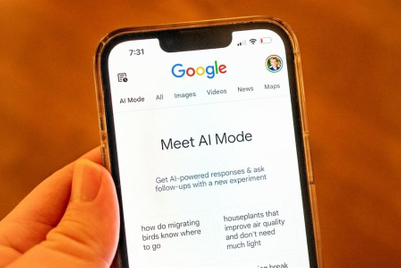
There are two kinds of customers Derek Laney encounters in his job as head of product marketing for Salesforce in Asia.
The first are those that ship out tonnes of email out the door, getting reasonable results, and are looking to do more of the same and drive efficiencies.
The second are transformational CMOs, aware of the disruptive innovations in their industry and seeking to do more to create better user experiences. Laney said that this is where conversations become focused on human-centred design and design thinking approaches.
“These are the two extremes, I’d like to think that we get more of the latter but in reality we still get a lot of the former,” he said. “So it’s a lot of education to highlight that it’s a short-term strategy, the customer is moving on. There's new competition popping up and companies from overseas getting better at personalising their messages to Asian markets.
Laney noted that consumers in Asia are more discerning, more willing to spend the time to learn and find out what the best product is for them and this opens up opportunities to engage long-term with their audiences.
Laney points to the work done by L’Oréal, in Australia, as one such example – a client with a grand goal of one billion new customers by 2020—50 per cent of which are to come through digital channels.
The company’s Australian operation is expected to play its part and aims to reach 2.5 million customers. It worked with a tech startup to create an app called Makeup Genius, which formed the centrepiece of L’Oréal’s personalised customer experience—and a key touchpoint in the journey its customers travel.
The virtual makeup tester uses a sophisticated algorithm that effectively turns a smartphone into a mirror, allowing customers to try makeup and products on themselves to create their own look. In just six weeks, 500,000 Australians downloaded the app.
“This was a massive shift for the company, even with its pioneer status in innovation marketing,” said Laney. “We’re seeing more traditional players taking this approach, acquiring new technology and stitching it all together with platforms to do new and exciting things. Brands need to think differently, if they’re in it for the long-term.”
Designing the customer journey
Salesforce started off in 1999, as a provider of cloud-based customer relationship management (CRM) software, but has since expanded its portfolio most notably with its Marketing Cloud which offers marketing automation and analytics software for email, mobile, social and online marketing.
The company claims, that customers that have deployed Marketing Cloud have seen an average of 43 per cent increase in marketing campaign ROI, 44 per cent increase in lead volume and 46 per cent faster campaign deployment.
In June, it announced enhancements to its Journey Builder tool, which includes the option to automate inbound event-driven triggers, such as a customer joining a loyalty program or downloading an app, so that the customer is automatically sent a message on any channel.
The tool is intended to give companies a single place for planning customer journeys, enabling marketers to map out the entire experience from discovery to purchase, engagement and beyond.
Laney shared some insight with the work being done by Microsoft, another Salesforce customer and partner, that uses its Journey Builder tool extensively.
“The customer experience is not a linear journey, they could be interacting with your brand at different touch points at different times or even simultaneously,” he said. “For Microsoft with its portfolio of products, they have 1,500 journeys for a single customer mapped out.”
“For many brands, in the past it’s been about above-the-line and channel marketing but now its a lot more pull, and building direct relationships with customers,” Laney added.
Tools such as Journey Builder are intended to aid marketers as they transform both internal and external strategies to create and sustain an ongoing brand experience, requiring more collaboration with other departments and third parties.
Laney believes that it is no longer about just campaigns for many marketers, especially in large organisations, with a shift towards “always-on experiences” for engaging and acquiring consumers.
“It’s no longer ‘okay let’s do a campaign for this quarter, let’s call up our agencies and see what they can come up with’,” he said. “We’ve passed the tipping point with this trend; marketing no longer operates in a silo with the lines of CRM blurring with other function like sales and services.”
Asked what message he had for marketers in Asia, Laney said that the focus on the customer should always be paramount, and thought should be given to the end-to-end customer experience every day.
“There’s a bunch of amazing technology out there, you need to be aware of them and have your eyes open on digital disruption and trends,” he said. “Marketing’s not about campaigns anymore, it’s about the experience, which means you need to be the chief of a bunch of different departments that may not report to you.”
Laney added that marketers should not think that they need to do everything and that collaboration, with their agencies and also innovations startups, can be an effective approach to execution.
“But ultimately you are responsible for the customer experience and that’s your opportunity to lead it,” he said. “To be an advisor to the CEO and the business, as the architect of that experience.”




.jpg&h=334&w=500&q=100&v=20250320&c=1)
.jpg&h=334&w=500&q=100&v=20250320&c=1)
.jpg&h=334&w=500&q=100&v=20250320&c=1)
.jpg&h=334&w=500&q=100&v=20250320&c=1)

.jpg&h=334&w=500&q=100&v=20250320&c=1)




.jpg&h=268&w=401&q=100&v=20250320&c=1)

.jpg&h=268&w=401&q=100&v=20250320&c=1)

.jpg&h=268&w=401&q=100&v=20250320&c=1)
.jpg&h=268&w=401&q=100&v=20250320&c=1)